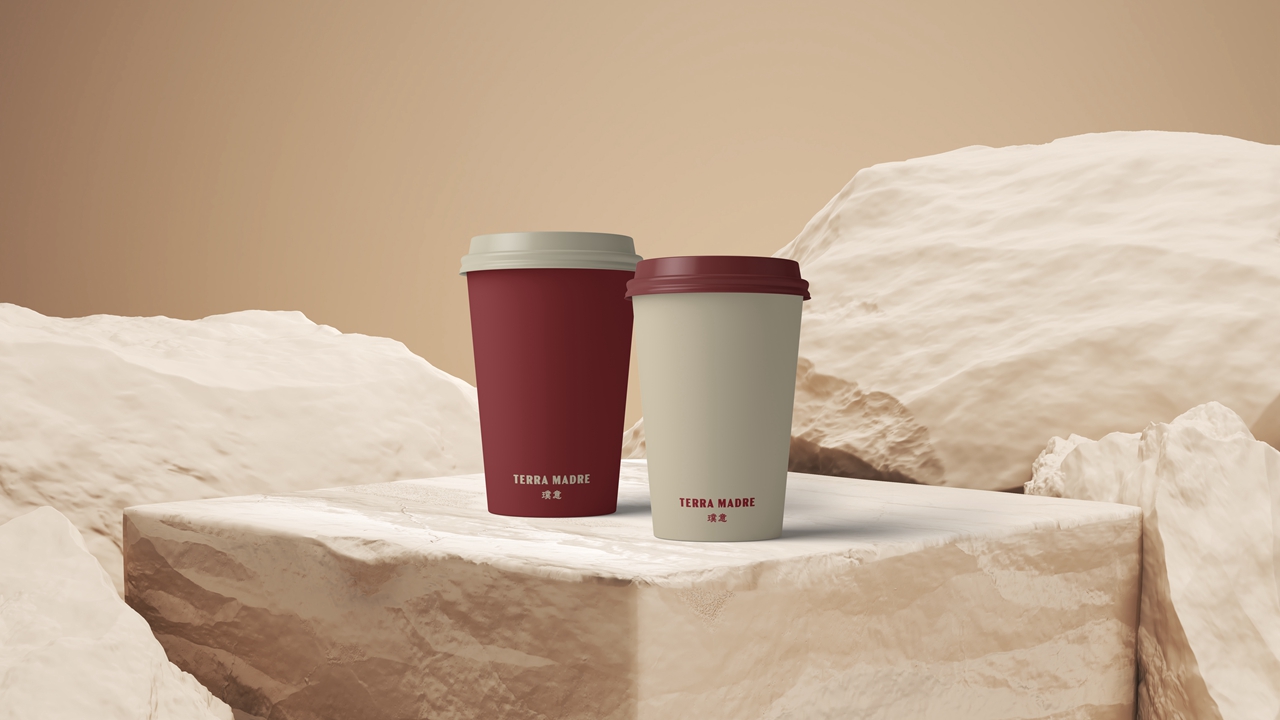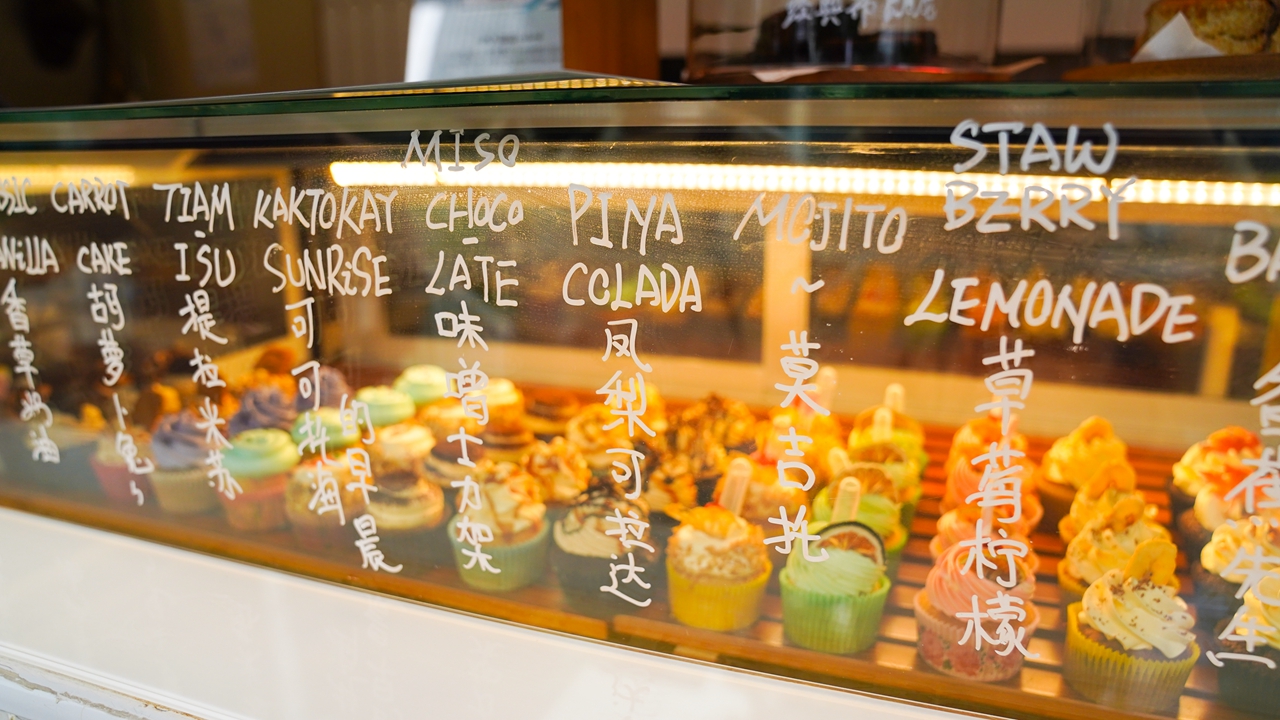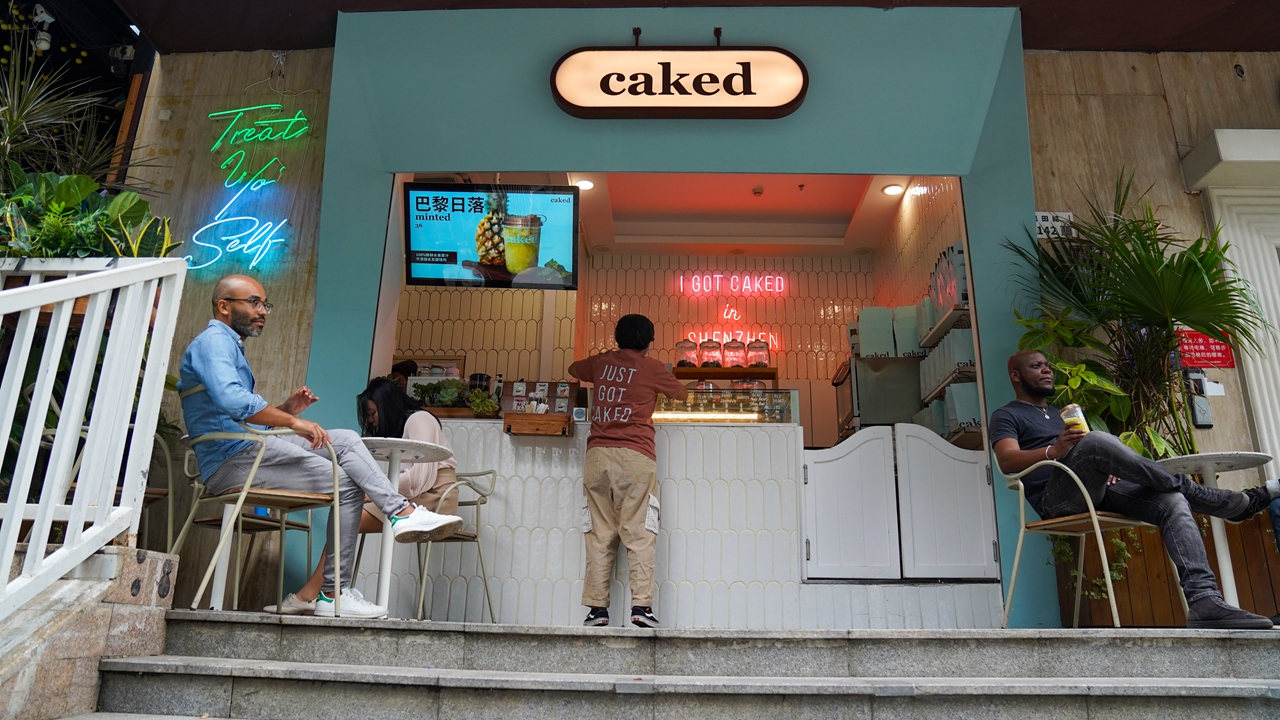An Italian-led branding studio and its 'meaningful' design
Writer: Wang Haolan | Editor: Zhang Chanwen | From: Shenzhen Daily | Updated: 2023-01-10
A+ A- Print
An Italian-led branding studio and its 'meaningful' design
“Design gives meaning to things.” While being asked what design is in a nutshell, Italian designer Sara Biancaccio, who owns a design studio named Panglossian in Shenzhen, shared her answer with a smile.
Sara Biancaccio has an interview with Shenzhen Daily. Lin Lin
The designer elaborated on her view using a glass cup as an example. “This cup is designed. Why? Because it can hold liquid. So it perfectly fulfills its purpose,” explained Biancaccio. “For a designer, our goal is to see our designs in supermarkets and in everybody’s homes. And I think design can give meaning to things in many aspects, and branding is the field on which we are now working.”
Meaningful design that makes brand shine
For Biancaccio, a “meaningful” design is more about making a brand matter through turning it from just an idea to the realization of the success of it.
“Panglossian’s area of expertise touches food and beverage (F&B), beauty and fashion and other areas,” she said. “We help brands better brand themselves at 360 degrees in terms of photography, logo, graphic language, visual identity (VI), user experience (UX) and user interaction (UI).”
It is also no wonder that this Milan-born designer knows well about how to brand herself. Biancaccio’s studio Spazio (means “space” in Italian), which was renovated from a residential building in a housing compound at the Honghuayuan Community in Nanshan District, is a minimalist, flexible workspace colored in black, white and red, and scented with herbaceous fragrance. “Visiting our studio is like an immersive experience into our mindset and identity,” said Biancaccio.

Panglossian designs the cup for Terra Madre, a local Italian restaurant. Courtesy of the interviewee
An interesting finding from reading Panglossian’s annual portfolios is that they not only have successful cases with big brands such as KFC, Hermes, Byredo, Wagas, GCDS and Rosewood Hotel, but also with local small businesses including restaurants, bars, bakeries and dessert shops.
For Biancaccio, the most obvious differences between serving a big brand and a small business lie in her mindset and approaches.

A poster shot by Panglossian for KFC. Courtesy of the interviewee
“A designer needs to understand the customer well and tries to wear the shoes of the customer,” she said. “When big brands come to you, you should be aware that they have already spent many years in building their brands in a strong way. Taking the commercial photography project with KFC as an example, I am just like one person out of 100 who are trying to make the brand shine, so it is basically about understanding and following the existing guidelines and working together with other professionals on the team to keep the brand shining.”
“When it comes to small brands, we study them, trying to understand their values, positions and their target customers. We can help them tailor from A to Z what they should look like, yet the satisfaction and the happiness are the same with collaborating with brands on seeing your job giving good support to their business.”
Biancaccio mentioned Panglossian’s recent branding project with a local small business named Caked, which is a petit dessert shop selling cupcakes, cookies, sandwiches and beverages near the Shopping Park area in Futian District. “They came to me, wanting to create a modern and Western-style cake shop. So, I talked with them first to understand what they sell and what kind of image they want to deliver for their brand,” she said. “I tried to create a sleek, contemporary and fresh branding that is desirable for the customers of Shenzhen.”

The counter of Caked in Futian District. Wang Haolan
“Cupcakes are a sweet and delicate dessert — sometimes related to the image of an attractive, good-looking woman. We want our shop to break that stereotype, presenting a unisex, international image which will be favored by both local and foreign customers,” said Liu Jingyi, owner of Caked. “In response to our needs, Panglossian used mint green and chocolate brown in the design of our VI system. She also integrated the signature scale-like tiles of our shop in the design of our cake box to help us develop a unified branding system.”
Small studio is the future
On Nov. 26, 2022, Biancaccio decorated her Spazio with the green and black iconic colors of Panglossian to welcome a small party marking the eighth anniversary of the founding of her studio. However, in normal times, the studio has three members only, including a contents creator and a junior graphic designer and Biancaccio herself.
“Small studios are the future, because you can take care much better of your clients’ needs and wants and even anticipate them,” Biancaccio said. “We see Panglossian as being blessed since it is not too large to reflect the opinions of small customers, but still has the individuality and sensibility to take on large corporate projects.”
Biancaccio appreciated the talents and visions of her team members despite their young age. “The girls from my team are from China but they have a great understanding of international culture,” she said. “I think that is why we are really connected. We are now working in China, but we are like a Western studio.”
Panglossian has rolled out a special design methodology that helps them listen to their clients with open ears and the willingness to embrace different ideas, according to Biancaccio. “First of all, we listen to our clients’ wishes, values, aims, potentials and goals. Without listening, there is no good design,” she said. “Then we research and evaluate the status quo of their brands, try to go through a divergent phase where we embrace different ideas and inspirations and thereafter go to a convergent phase to identify a clear idea and direction for our projects.”
In pursuit of evergreen branding in Shenzhen
Panglossian, now a mature design studio with three branches in Venice, Shenzhen and Hong Kong, was established in 2014 by Biancaccio and her Italian classmate Benedetta Anghileri while pursuing their master’s degrees in the College of Design and Innovation at Tongji University in Shanghai.
“Panglossian was founded in Shanghai as a freelance studio and officially registered as a proper studio in Shenzhen in 2016,” she recalled. “It was very casual when we first came to Shenzhen in October 2015, planning to stay for only six months in the city. But we then found that it is a great city for opportunities, so eventually I am still here.”
Biancaccio confessed that back in 2015 there were fewer competitors in Shenzhen than in Shanghai. And as the city neighbors Hong Kong, they could also get in easy touch with clients in the special administrative region.

The storefront of Caked in Futian District. Wang Haolan
“Shenzhen is a great city,” she said. “From sketching on the laptop to seeing our works done, the whole process may only take a few months, which is fast and rewarding for our job. While in Europe, the process may be much slower.”
As a mature branding designer with education backgrounds from top art academies such as Central Saint Martins in the U.K. and over eight years of international working experience, Biancaccio thought that the most valuable thing she can bring to the local design industry in Shenzhen is her original culture from her upbringing.
“I have been living in different places over many years, but my background is from Europe. So I can bring something more than what the locals can know,” Biancaccio explained while depicting her design as a cross-cultural practice, “I can add a bit more texture and bring new perspectives to local design. I can serve as a bridge between local people and people with overseas experience, trying to formulate the right equation to make your ideas work here.”
Although agreeing that a good designer needs to be sensitive to the trends, the ultimate goal for Biancaccio is still to create an evergreen branding that can last forever. “Frankly speaking, the logos of big brands like Apple and Nike are not prone to change according to the trend. Instead, they are the trend,” she said.